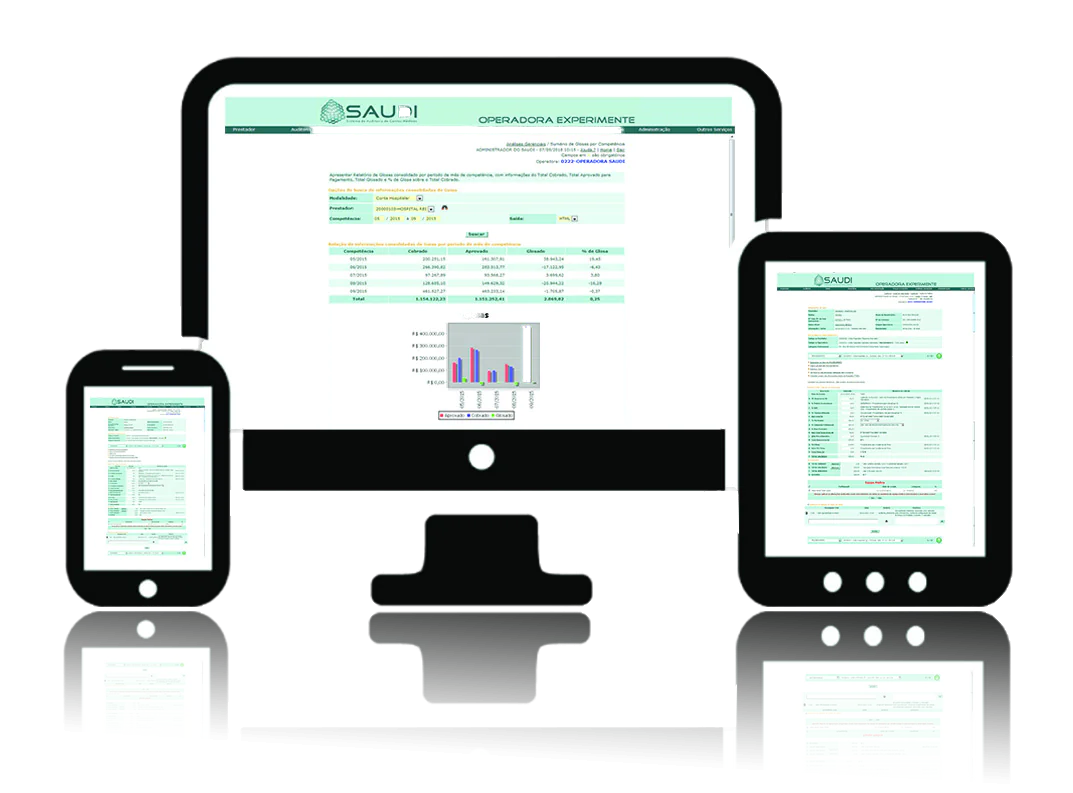A CBHPM table (Brazilian Hierarchical Classification of Medical Procedures) is an essential reference in the routine of medical bill analysts and managers. It organizes medical procedures in a standardized way, establishing values, nomenclatures and technical criteria.
 Despite its importance, many professionals still have doubts about how to correctly apply its rules on a daily basis, ensuring efficient audits in line with the operator's guidelines. In this article, you will learn how to use the CBHPM table in a practical and strategic way - and how the Technology can make this process much easier.
Despite its importance, many professionals still have doubts about how to correctly apply its rules on a daily basis, ensuring efficient audits in line with the operator's guidelines. In this article, you will learn how to use the CBHPM table in a practical and strategic way - and how the Technology can make this process much easier.
What is the CBHPM table?
CBHPM is a document created by Brazilian Medical Association (AMB)The aim of the bill is to standardize medical procedures carried out in the country. It assigns codes, defines technical standards and establishes the number of Operating Cost Units (OCUs) for each procedure - which serve as the basis for calculating medical fees.
Why is it essential to apply the CBHPM correctly?
Correctly applying the CBHPM table avoids:
- Undue disallowances or flaws in the technical analysis;
- Incorrect payments to providers;
- Misalignment with ANS contracts and guidelines;
- Financial losses for the health insurance company.
In other words, the correct application of the CBHPM protects both the operator and the providers, as well as guaranteeing fairer care for the beneficiary.
1. understanding the structure of the CBHPM
 The CBHPM table is divided into medical specialties, with chapters that group the procedures together. Each item contains:
The CBHPM table is divided into medical specialties, with chapters that group the procedures together. Each item contains:
- Code;
- Technical description;
- UCOs and technical support;
- Association rules.
Practical tip: put together an internal guide with the chapters most used by your operator to facilitate navigation and speed up account analysis. Get to know Saudi system, used by dozens of health operators throughout Brazil.
2. Interpret the CBHPM association rules correctly
One point of attention in the CBHPM is the rules for associating procedures. When more than one procedure is performed in the same act, the main one is paid in full, and the others are reduced proportionally (usually 50% or 70%).
Example: A surgery with cholecystectomy and hernioplasty must follow the CBHPM rules for multiple procedures.
The analyst must check:
- Technical compatibility;
- Clinical justification;
- Correct application of reduction percentages.
3. Always keep the CBHPM up to date
The AMB periodically updates the CBHPM table, including new procedures, adjusting values and modifying rules. Using an outdated version compromises the operator's compliance with regulatory guidelines.
Good practices:
- Use systems that automatically update the CBHPM table. Many healthcare operators automate processes to ensure compliance and shield the operator from any problems.
- Establish an internal periodic review process;
- Train the team whenever there are relevant changes.
4. Evaluate materials and medicines charged separately
 The CBHPM table does not include materials, medicines and OPMEs (orthoses, prostheses and special materials). Therefore, the analysis must identify:
The CBHPM table does not include materials, medicines and OPMEs (orthoses, prostheses and special materials). Therefore, the analysis must identify:
- Items already included in the procedure;
- Duplicate charges;
- Compatibility with the clinical context.
When necessary, consult the ANS clinical protocols and involve the medical auditor.
5. Check the compatibility between the technical size and the venue
Each procedure in the CBHPM has a technical size, which requires a minimum physical and technical structure. More complex surgeries, for example, cannot be charged as if they were done in a doctor's office or outpatient clinic.
Recommendations:
- Check that the environment has a structure compatible with the size required;
- Constantly update the accreditation of the provider network;
- Support on-site audits to validate the declared structure.
6. How the SAUDI system optimizes the application of CBHPM
To guarantee the correct use of the CBHPM table and optimize the process of auditing medical bills, having a specialized tool makes all the difference. O SAUDI is a system that automates the application of the CBHPM rules, offering:
- Automatic validation of procedure associations;
- Detection of non-conformities;
- Intelligent cross-checking of data with contractual rules;
- Reduction of undue disallowances and increased financial predictability.
In addition, SAUDI keeps up to date with the latest versions of the table, ensuring compliance and security for the operator. In a regulated and dynamic market, investing in technology is a strategic choice.
7. Standardize and demand clinical documentation
Technical analysis must always be based on appropriate documentation:
- Complete TISS guides;
- Reports and reports;
- Clinical justifications.
Tip: create a checklist of documents required for the main procedures. This speeds up screening and avoids misinterpreted disallowances.
8. Invest in constant training
The rules of the CBHPM table are not static. Training the team guarantees this:
- Safer technical interpretation;
- Faster analysis;
- Improved relations with suppliers.
Suggestions:
- Hold regular workshops;
- Encourage the use of official AMB materials;
- Encourage analysts to discuss practical cases.
Optimize your daily life with the SAUDI System
Correctly applying the rules of the CBHPM table on a daily basis is essential for the sustainability of the supplementary health sector. With technical knowledge, well-defined processes, strategic use of technology and a trained team, operators can achieve greater efficiency, reduce errors and guarantee regulatory compliance.
The use of solutions such as SAUDI is a differentiator that transforms the management of medical bills, guaranteeing more security, transparency and intelligence in the application of the CBHPM. Consult now talk to one of our experts and find out more about this and other advantages of having SAUDI automate the entire process of auditing medical bills.
Did you like this content? Share it with your team and follow our blog for more tips on efficient management in supplementary health! ; )










